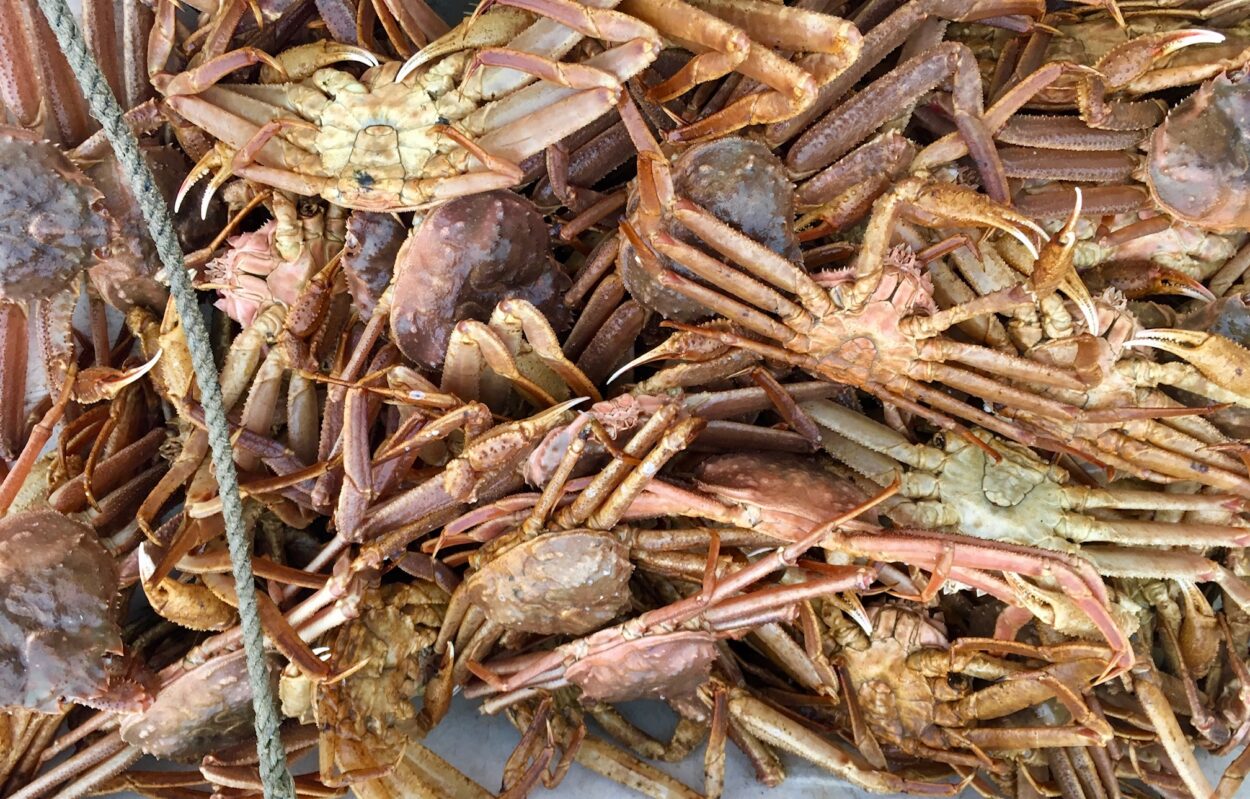
The upcoming Tanner crab fishery in Southeast Alaska is looking very promising. The fishery starts on February 11 and as Angela Denning reports, the harvest and price could be historic.
State crab managers haven’t seen this kind of encouraging preview for Southeast’s Tanner fishery for a few decades. The Alaska Department of Fish and Game has tracked the Tanner population through annual surveys since the late 1990s.
“What we’re seeing is kind of historically high levels,” said Joe Stratman, the lead crab manager for the Alaska Department of Fish and Game in the region. He says the numbers look like they did when the surveys first started.
The abundance estimate for the fishery is 5.81 million pounds. That represents the estimated mature male crab, which is a 17 percent increase over last year.
The news has fishermen eagerly preparing their boats and assembling their crews.
“I know folks are excited to get out there and set some gear,” said Stratman.
It’s not only the harvest that looks good but also the price. What’s paid for the crab could be break records if it follows the trend in other fisheries. In Kodiak, Tanner brought over $8/pound in January, which is about double what was paid last year.
And Southeast’s Dungeness crab fishery last summer also saw record prices at over $4/pound. That’s more than what was paid for Tanner last February, which averaged $3.37/pound.
Still, last year’s Tanner fishery was worth a lot, valued at $4.26 million. It brought in 1.27 million pounds of crab, which is a bit above the 10-year average.
The male biomass that the biologists track includes both mature and legal-sized crab. So, even though some crab are too young to be sold commercially, Stratman says it shows that the population is steady.
“So, there’s always kind of a cohort of crab coming along behind the legal crab and luckily in Southeast we see that consistently in our crab surveys,” he said.
The length of the fishery will depend on the number of permits and pots. Fishermen have until the opening day to register.
Another crab fishery is happening along-side the Tanner fishery in Southeast. That’s for golden king crab. The fishery is much smaller, with only 15 permits participating last year, but it’s still valuable. Last year, the fishery was worth $700,000 at $11.55/pound. The harvest however was well below the 10-year average at 61,000 pounds.
The golden king crab fishery includes seven harvest goal areas in Southeast, which can be closed by managers before or during the season. The northern area is already closed this year.
The total harvest goal for goldens is 75,300 pounds for the region. That’s better than last year but still considered low.
The golden kings are a slow growing crab and they don’t reach maturity until eight years of age. They also don’t follow annual reproduction cycles like many other species, says Stratman.
“Their reproductive cycle doesn’t really conform to a calendar,” Stratman said. “We think it’s about 20 months.”
Fish and Game relies on harvest data to manage the golden fishery because they don’t do surveys on the crab. Harvests have fluctuated widely since the fishery began in the 1970s.









